Interstellar: Whitney museum toasts Frank Stella with a retrospective
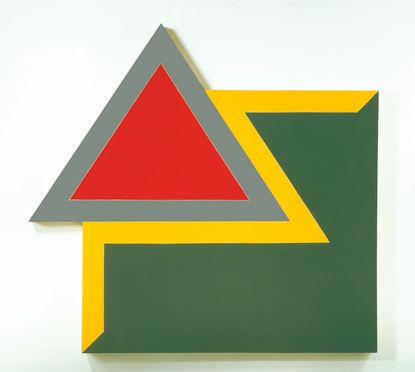
Easily one of the most highly anticipated art exhibitions of the season, the Whitney Museum of American Art’s Frank Stella survey, which opened this week in New York, began with a simple curatorial question: What major artist hasn’t had a major retrospective in a long time? 'The surprising answer, among others, was Frank Stella,' said Michael Auping, the chief curator at the Modern Art Museum of Fort Worth, who helped organise the show, as he addressed a drove of journalists on a drizzly Wednesday morning.
The exhibition, titled 'Frank Stella: A Retrospective,' is on view at the Whitney through February before it heads to the Modern Art Museum of Fort Worth the following summer, and then to the de Young Museum in San Francisco. The exhibition, designed by starchitect Annabelle Seldorf, spans the entire length of Stella’s career (six decades) putting together approximately 100 works, some which the world has had the pleasure of viewing in major museums, and others that have been tucked away in private collections for many years.
One thing the curators brought up repeatedly was Stella’s ability to reinvent himself — and his work — throughout his life, and that is evident through the pieces seen in the Whitney’s galleries. The retrospective opens with two works that demonstrate Stella’s Scope; on one side is Pratfall, a simple 1974 painting that depicts a number of squares to make the viewer feel as if they are falling down a hole. Next to it is Das Erdbeben in Chili, a large scale 1999 piece that is chaotic as its name (Erdbeben means earthquake in German) implies; different patterns and shapes and colors collide with one another.
Also included are Stella’s minimal classics, like Harran II, a vivid piece from 1967 that puts together a series of curves, and the 1966 painting Chocorua IV, which is made up of four colours — red, grey, yellow and green — and consists of a triangle drawn over a square. Rarely-seen treats, like a selection of drawings from the ‘50s and ‘60s are also on display, as are a series of maquettes of his more recent, enormous sculptures. As Stella evolves an artist, there’s no denying that his newer work becomes more complex and elaborate.
Although Stella wasn’t present that morning — he was apparently napping, and at 70, that isn’t a surprise — Adam Weinberg, the director of the Whitney, did bring up a quote that explained Stella’s personality in one phrase through an interview with art historian Caroline Jones, which also appears as one of the wall texts:
Q: Where do you stand on 'purity'?
A: I don’t know. Wherever I happen to be.
'Classic Frank,' Weinerg says. 'Totally evasive.'

The exhibition is designed by Annabel Selldorf and will travel to the Modern Art Museum of Fort Worth the following summer, and then to the de Young Museum in San Francisco. Pictured: Gobba, zoppa e collotorto, 1985. Oil, urethane enamel, fluorescent alkyd, acrylic, and printing ink on etched magnesium and aluminum
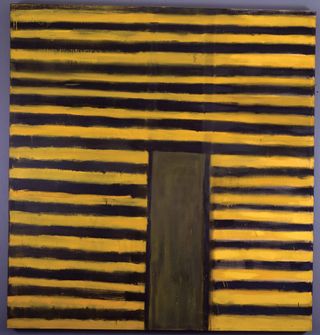
One palpable aspect of the show is Stella’s ability to reinvent himself and his work throughout his life. Pictured: East Broadway, 1958. Oil on canvas
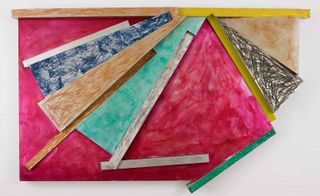
Stella's evolution as an artist is reflected in his more recent work being increasingly elaborate and complex. Pictured: Grajau I, 1975. Paint and laquer on aluminum

'Frank Stella: A Retrospective' charts the artist's career over six decades. Pictured: The Whiteness of the Whale (IRS-1, 2X), 1987. Paint on aluminum
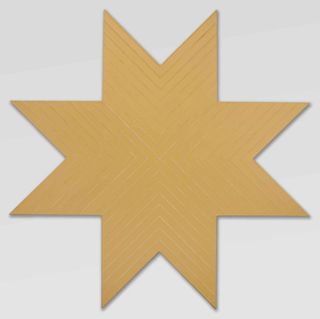
Plant City, 1963. Zinc chromate on canvas
INFORMATION
’Frank Stella: A Retrospective,’ opens on 30 October and will run until 7 February 2016
Photography: Courtesy of the artist and Whitney Museum of American Art
Address
Whitney Museum of American Art
99 Gansevoort Street
New York
Wallpaper* Newsletter
Receive our daily digest of inspiration, escapism and design stories from around the world direct to your inbox
Ann Binlot is a Brooklyn-based freelance writer who covers art, fashion, design, architecture, food, and travel for publications like Wallpaper*, the Wall Street Journal, and Monocle. She is also editor-at-large at Document Journal and Family Style magazines.
-
 Ikea introduces its first gaming furniture collection
Ikea introduces its first gaming furniture collectionBrännboll is the first Ikea gaming furniture collection, unveiled during Milan Design Week 2024 and designed to swiftly transform a domestic space into a gamer’s paradise
By Jasper Spires Published
-
 Morgan take their classic roadster and give it subtle but significant tweaks for 2024
Morgan take their classic roadster and give it subtle but significant tweaks for 2024New details and features give the compulsive Morgan Plus Four an even more pared back silhouette and driving ability
By Jonathan Bell Published
-
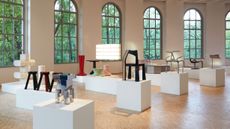 Wallpaper* Class of '24 exhibition now open at Triennale Milano
Wallpaper* Class of '24 exhibition now open at Triennale MilanoWallpaper* Class of '24 exhibition at Triennale spotlights international emerging talent in furniture and product design, with the support of AHEC and SNOW (until 21 April 2024)
By Rosa Bertoli Published
-
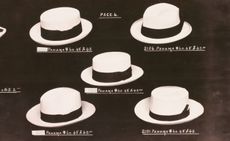 The Met’s ‘The Real Thing: Unpacking Product Photography’ dissects the avant-garde in early advertising
The Met’s ‘The Real Thing: Unpacking Product Photography’ dissects the avant-garde in early advertisingA new exhibition at The Metropolitan Museum of Art in New York explores the role of product photography and advertising in shaping the visual language of modernism
By Zoe Whitfield Published
-
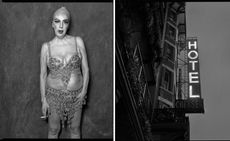 Tony Notarberardino’s Chelsea Hotel Portraits preserve a slice of bygone New York life
Tony Notarberardino’s Chelsea Hotel Portraits preserve a slice of bygone New York life‘Tony Notarberardino: Chelsea Hotel Portraits, 1994-2010’, on show at New York’s ACA Galleries, is the photographer’s ode to the storied hotel he calls home and its eclectic clientele
By Hannah Silver Published
-
 ‘LA Gun Club’: artist Jane Hilton on who’s shooting who
‘LA Gun Club’: artist Jane Hilton on who’s shooting who‘LA Gun Club’, an exhibition by Jane Hilton at New York’s Palo Gallery, explores American gun culture through a study of targets and shooters
By Hannah Silver Published
-
 Detroit Institute of Arts celebrates Black cinema
Detroit Institute of Arts celebrates Black cinema‘Regeneration: Black Cinema 1898-1971’ at the Detroit Institute of Arts (DIA) brings lost or forgotten films, filmmakers and performers to a contemporary audience
By Anne Soward Published
-
 BLUM marks 30 years of Japanese contemporary art in America
BLUM marks 30 years of Japanese contemporary art in AmericaBLUM will take ‘Thirty Years: Written with a Splash of Blood’ to its New York space in September 2024, continuing its celebration of Japanese contemporary art in America
By Timothy Anscombe-Bell Published
-
 Todd Gray’s sculptural photography collages defy dimension, linearity and narrative
Todd Gray’s sculptural photography collages defy dimension, linearity and narrativeIn Todd Gray’s New York exhibition, he revisits his 40-year archive, fragmented into elaborated frames that open doors for new readings
By Osman Can Yerebakan Published
-
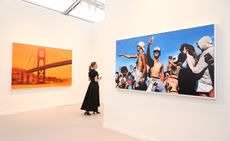 Frieze LA 2024 guide: the art, gossip and buzz
Frieze LA 2024 guide: the art, gossip and buzzOur Frieze LA 2024 guide includes everything you need to know and see in and around the fair
By Renée Reizman Published
-
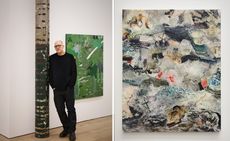 New York artist Christopher Astley showcases an alternative natural world
New York artist Christopher Astley showcases an alternative natural worldAt Martos Gallery in New York, Christopher Astley’s paintings evoke an alternative natural world and the chaos of warfare (until 16 March 2024)
By Tianna Williams Published